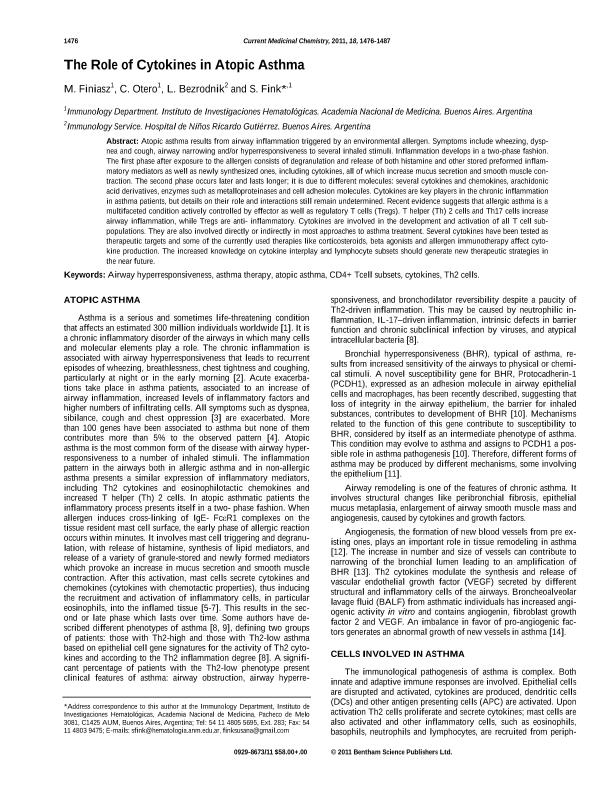Artículo
The role of cytokines in atopic asthma
Fecha de publicación:
04/2011
Editorial:
Bentham Science Publishers
Revista:
Current Medicinal Chemistry
ISSN:
0929-8673
e-ISSN:
1875-533X
Idioma:
Inglés
Tipo de recurso:
Artículo publicado
Clasificación temática:
Resumen
Atopic asthma results from airway inflammation triggered by an environmental allergen. Symptoms include wheezing, dyspnea and cough, airway narrowing and/or hyperresponsiveness to several inhaled stimuli. Inflammation develops in a two-phase fashion. The first phase after exposure to the allergen consists of degranulation and release of both histamine and other stored preformed inflammatory mediators as well as newly synthesized ones, including cytokines, all of which increase mucus secretion and smooth muscle contraction. The second phase occurs later and lasts longer; it is due to different molecules: several cytokines and chemokines, arachidonic acid derivatives, enzymes such as metalloproteinases and cell adhesion molecules. Cytokines are key players in the chronic inflammation in asthma patients, but details on their role and interactions still remain undetermined. Recent evidence suggests that allergic asthma is a multifaceted condition actively controlled by effector as well as regulatory T cells (Tregs). T helper (Th) 2 cells and Th17 cells increase airway inflammation, while Tregs are anti- inflammatory. Cytokines are involved in the development and activation of all T cell subpopulations. They are also involved directly or indirectly in most approaches to asthma treatment. Several cytokines have been tested as therapeutic targets and some of the currently used therapies like corticosteroids, beta agonists and allergen immunotherapy affect cytokine production. The increased knowledge on cytokine interplay and lymphocyte subsets should generate new therapeutic strategies in the near future.
Archivos asociados
Licencia
Identificadores
Colecciones
Articulos(IMEX)
Articulos de INST.DE MEDICINA EXPERIMENTAL
Articulos de INST.DE MEDICINA EXPERIMENTAL
Articulos(SEDE CENTRAL)
Articulos de SEDE CENTRAL
Articulos de SEDE CENTRAL
Citación
Finiasz, Marta Regina; Otero, Constanza; Bezrodnik, Liliana; Fink, S.; The role of cytokines in atopic asthma; Bentham Science Publishers; Current Medicinal Chemistry; 18; 10; 4-2011; 1476-1487
Compartir
Altmétricas




